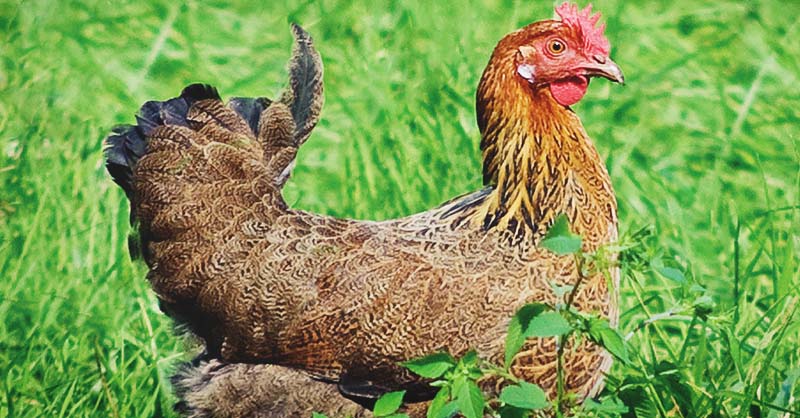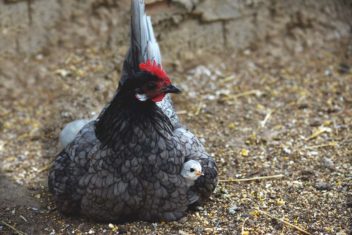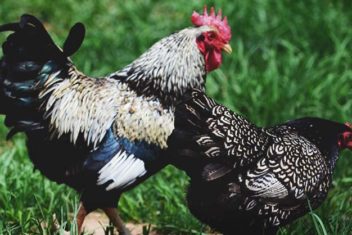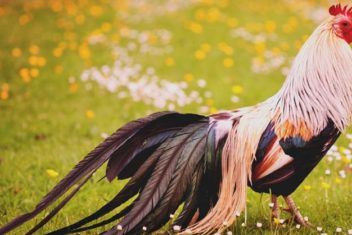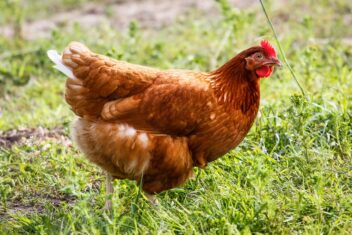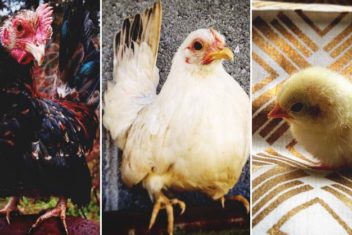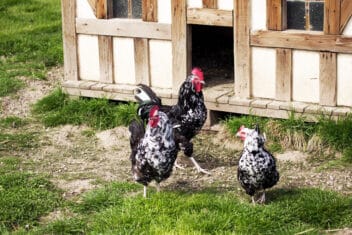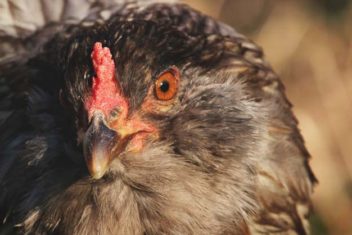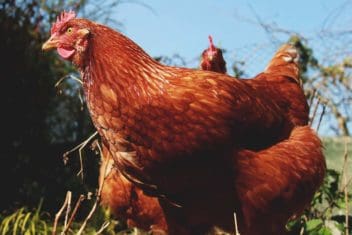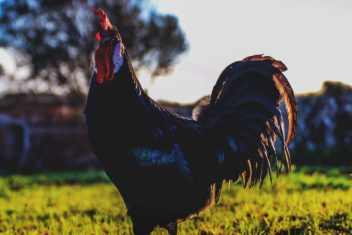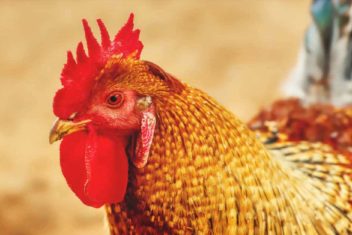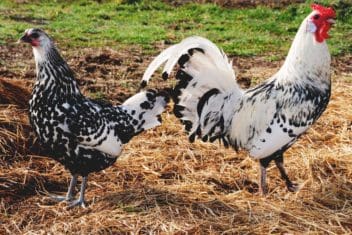Penedesenca Chickens are small and active birds that are well suited for farms where they can range far and wide. Penedesencas also have a high tolerance to heat due to their Spanish origins, so they’ll do well during the summer months and in hotter climates.

About Penedesenca Chickens
In the Spanish region of Catalonia, dark egg-laying chickens were raised by many backyard chicken keepers. In 1932, near Vilafranca del Penedès, keepers used selective breeding and worked towards refining these egg layers. After a few years of work, breeders created what is now known as the Penedesenca chicken. A breed standard was created and accepted in 1946.
Penedesenca Characteristics
1. Size and Weight
This is not a large chicken by any means. Their small size helps them to stay cool, part of why Penedesencas do just fine in hotter climates. Penedesenca roosters weigh in somewhere between 5 and 6 pounds while hens tip the scales at about 4.5 pounds.
2. Temperament
As with most Mediterranean breeds, the Penedesenca is not a chicken you would pick out to be your pet. Penedesencas are flighty and choose to avoid people and stick to their own kind. This chicken definitely does not make a good broody mother.
3. Egg Production
Another thing that Mediterannean breeds are not the best at is egg production. However, it isn’t exactly the worst either. You can expect this small hen to lay about three eggs per week, with an annual egg production of around 156 eggs.
4. Meat Production
Penedesencas are not a dual purpose breed and would not be considered for meat production. If you’d like a good egg layer and meat producer in one breed, Wyandottes or Orpingtons would be good breeds to look into.
Taking Care of Penedesencas
1. Feeding and Nutrition
From the beginning of their lives, chicks need a good quality chick starter to jump things off. At 12-16 weeks of age, transition your young birds to laying feed so they can prepare for egg-laying. All through their adulthood, Penedesencas will do fine on laying feed with the occasional calcium supplement to support strong eggshells.
2. Housing and Fencing
One nice thing about Mediterannean breeds is that they are great at free-ranging and evading predatorial efforts. If you must confine Penedesencas, provide as much room as possible in the run, with a minimum of 10 square feet per bird. Inside the coop, 3-4 square feet per bird is adequate to make sure everyone has room to get along with minimal squabbles.
3. Health Issues and Care
Penedesencas are a robust and hardy chicken that don’t have any specific health susceptibilities. This doesn’t mean that a close eye kept on the flock to catch and prevent any oncoming issues is not imperative.
However, Penedesencas can sometimes grow rather large combs and it is important to protect them in the cold weather to prevent frostbite.
4. Breeding
Good quality Penedesenca breeding stock is rather hard to find in the United States. Due to the limited stock, it would be difficult to acquire good stock. However, once you have some good birds, a Penedesenca breeding operation could be profitable. There is a demand for dark brown egg layers, so dark egg-laying flock could definitely pull in some customers.
Breed Alternatives
1. Sicilian Buttercup
The Sicilian Buttercup is another Mediterannean breed that would fit in nicely with a flock of Penedesencas. Sicilian Buttercups are active and heat tolerant chickens with similar egg production qualities to Penedesencas.
2. Ancona
If you want a Mediterannean breed, but am after better egg producers, look no further than the Ancona. On top of their egg production, Anconas are just gorgeous chickens that will spice up any small flock.
3. Black Copper Maran
This chicken is a step away from Mediterannean chickens, but if you like the thought of dark eggs, this is a good chicken for you. Black Copper Marans lay dark chocolate-brown eggs depending on the strain. These chickens are a dual-purpose breed with better egg production than the Penedesencas, making them a more practical chicken.
Did You Know?
These chickens sport a fun comb-type that is definitely not commonly found on many chickens. Introducing the carnation combed chicken!
The entire time I’ve been planning and writing this article, I’ve marveled at the spelling and pronunciation of the name “Penedesenca”. Just in case you’re ready to go tell all your friends about this lovely breed, the proper pronunciation is PEN-uh-DES-EN-cuh. Trust me, you don’t want to hear how I was pronouncing the name before I found the correct pronunciation because it was not pretty.
This beautiful egg producer would add some nice eye candy to any yard or homestead. Enjoy the perky personalities of this active little bird on your farm!

